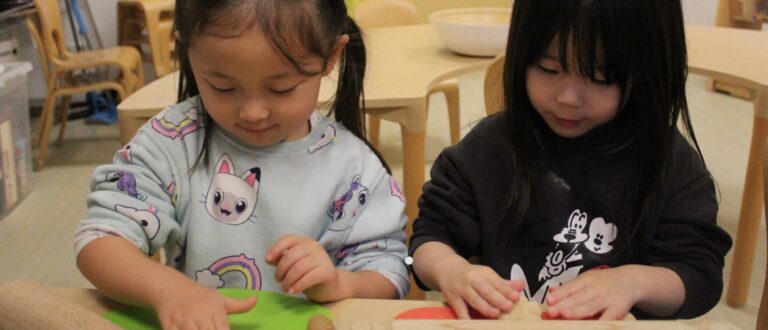Outdoor Classroom Day is a global movement that celebrates the benefits of outdoor education. Taking place twice a year, in May and November, educators around the world take their students outside for this special day. Megan Smith from the International School of Amsterdam takes you through the reasons this event is so important for children.
Encouraging children to spend time connecting with nature is essential for their wellbeing, including their physical, mental and emotional development. However, a UK study by the National Trust found that children spend half the time playing outside than their parents did when they were young, at around an average of four hours per week compared to a previous 8,2 hours. The outdoor classroom movement aims to bridge this gap by campaigning for students to spend more time outdoors as part of the curriculum.
What is inquiry-driven outdoor learning?
Outdoor learning is a child-centred approach to Early Years Education. Often without a rigid structure, outdoor learning uses meaningful provocations to nurture the value of inquiry by encouraging students’ curiosity about the world around them, giving each child freedom and agency over their learning process.
A typical day of learning outdoors begins with children grouping around a “gathering place”, which acts as a base for them to leave from and return to when asked. This technique helps students to learn boundaries and gives them a sense of independence.
Some outdoor learning enquiries include observing insects, using natural materials to create something, or taking photos of the seasonal changes in plants and trees.
Additionally, “Free-Flow” is an outdoor learning technique in which classroom doors are left open, and students are able to move freely around both inside and outside. This fluidity of learning space allows the benefits of outdoor learning to be brought inside the classroom.
The value of outdoor learning: From loose parts to limitless imagination
The outdoors provides a stimulating learning environment which enhances a child’s engagement with learning. Instead of being restricted by the four walls of a traditional classroom, students are given the space they need to learn with their whole bodies.
Similarly, many materials found in nature, such as leaves, sticks and stones, are considered by educators as “loose parts” with no specific learning objective ascribed to them, unlike some traditional classroom materials. These loose parts encourage students to use their imagination and be creative, bridging their unique inner world with the outdoor classroom by allowing them to execute any ideas they come up with.
Children benefit from feeling this sense of ownership over their own learning process. It allows them to gain a better understanding of the environment and the world around them. It also encourages them to develop essential skills for life, such as critical thinking, problem-solving and independence. This sense of agency also allows children’s confidence and belief in themselves to grow and flourish.
An educator’s perspective on outdoor learning
Eli Arenas Thomas, a Lower School Counsellor, is passionate about the benefits of outdoor learning for children: “I see every day how this approach is a powerful way of reconnecting children with the natural world. It benefits the whole child, their state of wellbeing and their connections to others.”
Outdoor learning is more than just education about nature. Any learning that happens indoors can happen outdoors in all areas of a school’s curriculum. Taking advantage of the varied and rich outdoor experiences gives space for children’s creativity, imagination and cooperative learning to grow.
It provides opportunities for student agency and real-life problem-solving in a rich context, leading to increased resilience to the changes that children will navigate throughout their lives. A stick is not a stick; it can be a magic wand, a fishing rod, a counting stick, a drawing tool in the mud, a spoon to make a cake in the mud kitchen – or if we find enough sticks, we can build a den!
“Children feel a strong connection to the natural environment,” Eli continues, “We know this because, as adults, some of our most powerful play memories happened outdoors. Young children are experts at being in the moment, and so we would do well to offer them many opportunities to be outdoors and to remind ourselves as adults to join them in watching the clouds float by, or to look at the spider spinning or to jump in a puddle (with boots!)”.
Outdoor learning beyond academics: Fostering wellbeing
Beyond the confines of traditional classrooms, the natural environment becomes a canvas for students’ curiosity, creativity and growth. As we continue to nurture this connection between young minds and the great outdoors, we pave the way for a future where learning is not just an indoor endeavour but an immersive journey that unfolds under open skies.







